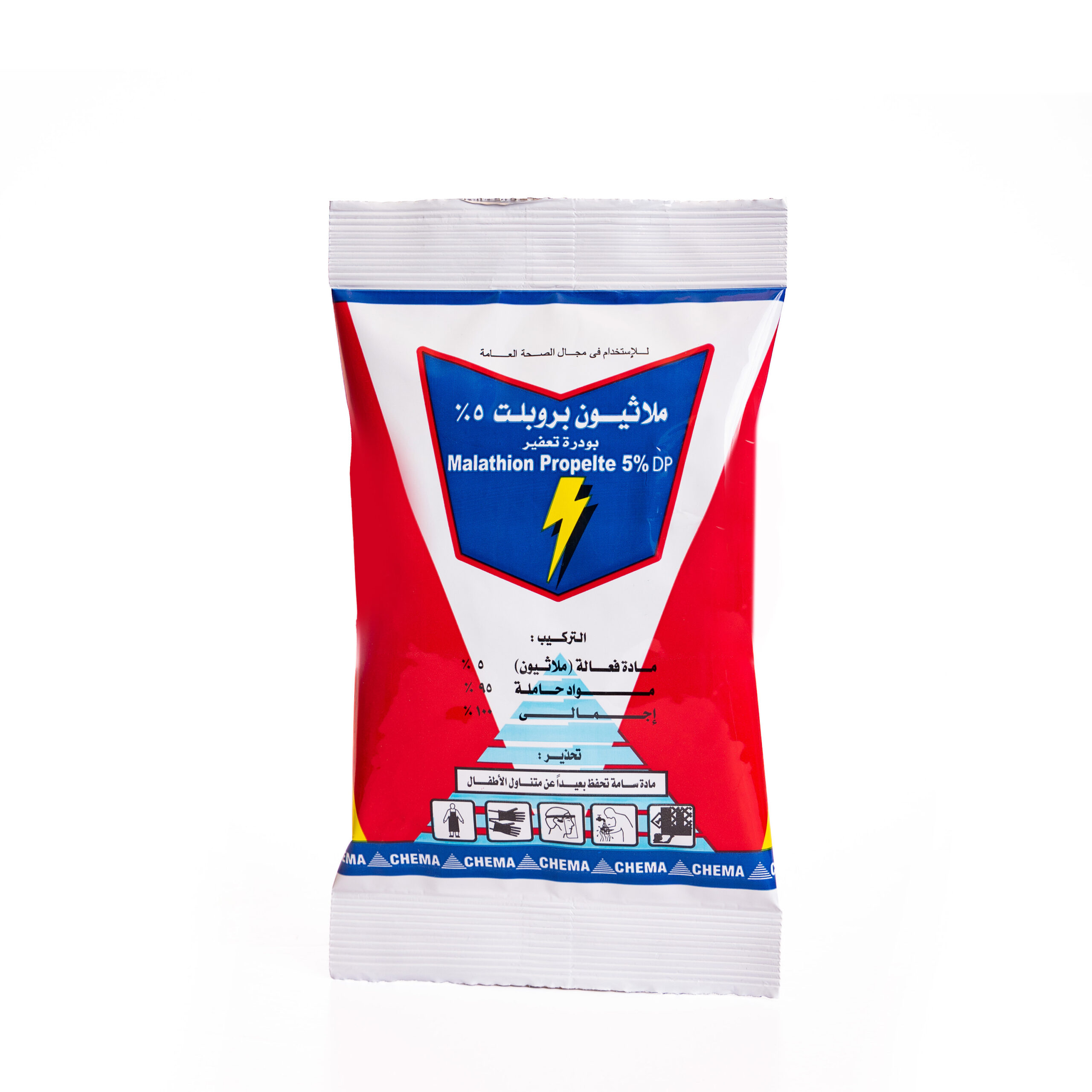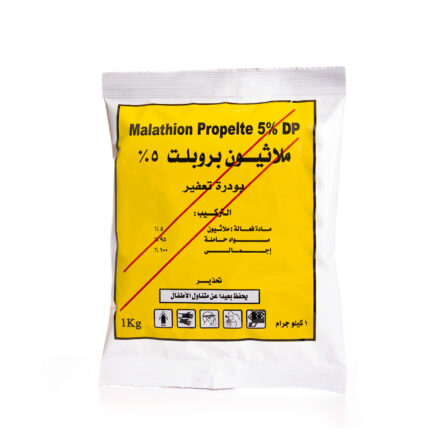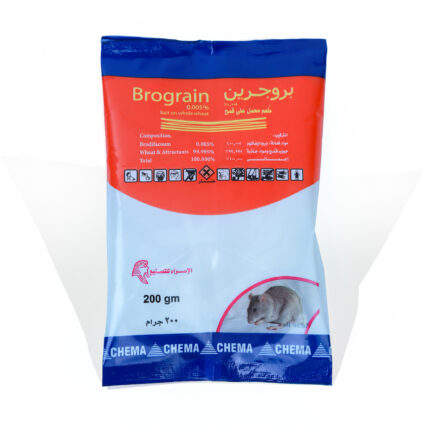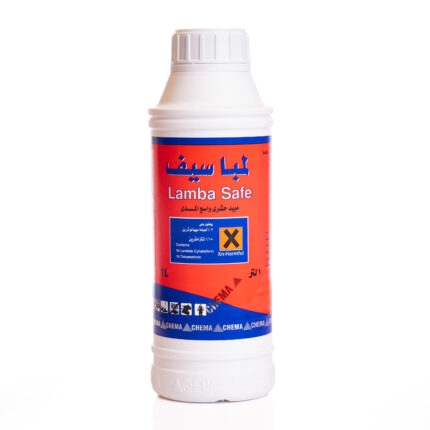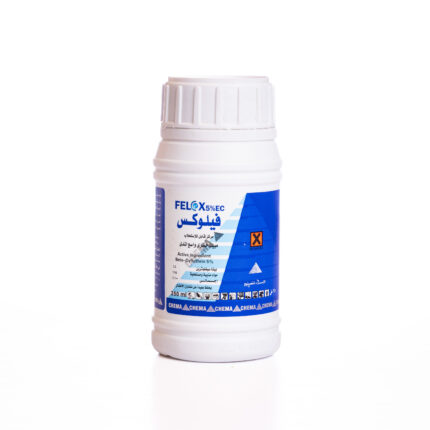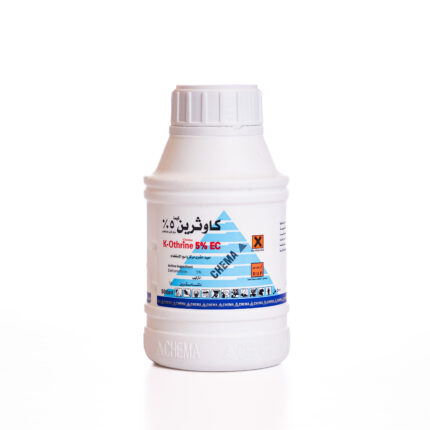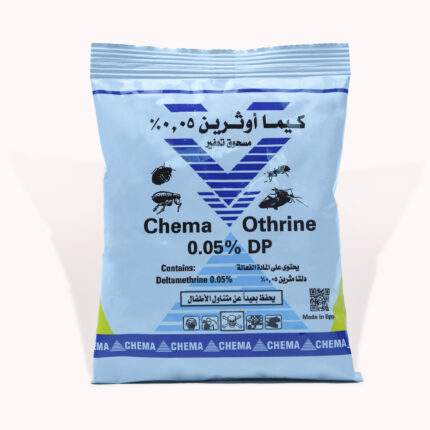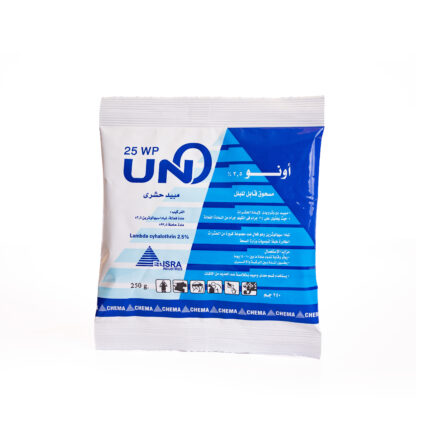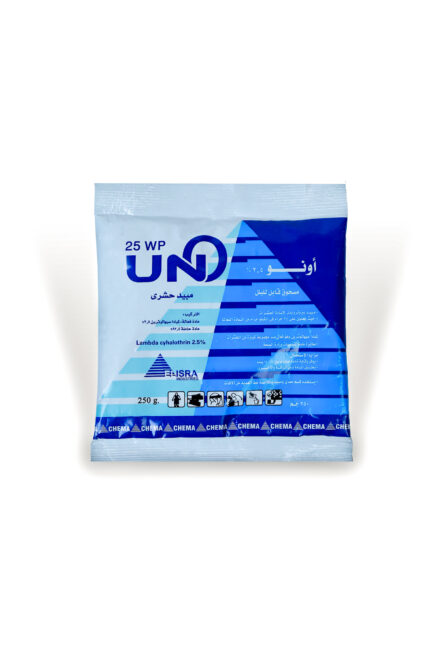Features and Specifications
ملاثيون بروبلت
ملاثيون 5% مسحوق تعفير
-مبيد حشري فسفوري عضوي في صورة مسحوق تعفير يعمل كسم معدي وبالملامسة وعن طريق الجهاز التنفسي وذو أثر باقي طويل الأمد
-يعمل علي تثبيط إنزيم الأسيتايل كولين
معدل الإستخدام
يستخدم لمكافحة برغوث الفأر ويختلف معدل إستخدامه طبقا لشدة الإصابة

Egypt

ملاثيون 5% مسحوق تعفير

SAFETY DATA SHEET
Common name:Malathion propelte5%DP
Form: Powder
-مبيد حشري فسفوري عضوي في صورة مسحوق تعفير يعمل كسم معدي وبالملامسة وعن طريق الجهاز التنفسي وذو أثر باقي طويل الأمد
-يعمل علي تثبيط إنزيم الأسيتايل كولين
EFFECTS OF OVEREXPOSURE
Symptoms of cholinesterase inhibition can be occurred, such as headache, dizziness, blurred vision, weakness, nausea, cramps, diarrhea, discomfort in the chest, nervousness, sweating, miosis (pinpoint pupils), tearing, salivation, pulmonary edema, uncontrollable muscle twitches, convulsions, cyanosis, coma, and loss of relaxes and sphincter control.
Substance
Conc.(W/W)
Active ingredient
Malathion
5%
Inert ingredient
Carrier
95%
Total
100% (CH3O)2PSCHCH2CO2CH2CH3CO2CH2CH3S
2
- harmful if swallowed - avoid contact with skin or clothing - avoid breathing vapors or spray mist - flammable - keep out of reach of children POTENTIAL HEALTH EFFECTS EYES: The undiluted product is moderately irritating to the eyes. Eye contact may include discomfort, tearing, swelling, redness, and blurred vision. SKIN: This substance is a moderate skin irritant. Skin irritation may include discomfort, redness, swelling, and possibly blistering. If absorbed through the skin, this substance is considered practically non-toxic to internal organs. INGESTION: Depending upon the amount of product swallowed, this substance can produce signs and symptoms of systemic poisoning. In addition the product contains a petroleum solvent that can directly enter the lungs if it is swallowed (this is called aspiration). This can occur during the act of swallowing or when vomiting the substance. Once in the lungs, the petroleum solvent is very difficult to remove and can cause severe injury to the lungs and death. See Toxicological Information. INHALATION: Prolonged or repeated inhalation exposure to the product vapor or spray mist may be harmful. See Toxicological Information. COMMENTS HEALTH: Depending upon the extent and degree of overexposure to the product, signs and symptoms of cholinesterase inhibition can result following either ingestion, skin contact or inhalation routes of exposure. Signs and symptoms of cholinesterase inhibition can also result from either acute (one time), subchronic (repeated short-term) and chronic (daily life-time) overexposure to the product. Signs and symptoms of cholinesterase inhibition usually occur within 12 hours following overexposure. These effects may include, but may not be limited to, headache, dizziness, weakness, nausea, vomiting, diarrhea, constriction of the pupil of the eye, blurred or dark vision, excessive salivation or nasal discharge, profuse sweating and abdominal cramps. Incontinence, unconsciousness, convulsions and breathing difficulties are indicative of severe poisoning. In untreated severe poisoning, death is due to respiratory failure or cardiac arrest. This product also contains a petroleum distillate. Depending upon the degree of overexposure, the systemic toxicity of the product may be of less concern than the potential clinical complications that can result from aspiration of the petroleum distillate into the lungs if the product is either swallowed or vomited.
Ingestion If victim is conscious and alert, give 2-3 glasses of water to drink and induce vomiting by toughing back of throat with finger. Do not induce vomiting or give anything by mouth to an unconscious person. Seek immediate medical attention. Eye rinse with water for 15-20minutes. Skin Rinse skin immediately with plenty of water for 15-20 minutes. Inhalation If inhaled, move person to fresh air. If person is not breathing, give artificial respiration, preferably mouth-to-mouth if possible. Note to physician Can be controlled with atropine in 2-4mg doses intravenously or intramuscularly. Pralidoxime chloride (2-PAM) may be effective as an adjunct to atropine.

 المبيدات الزراعية
المبيدات الزراعية أسمده متخصصه و منظمات نمو
أسمده متخصصه و منظمات نمو مبيدات الصحة العامة
مبيدات الصحة العامة ماكينات
ماكينات